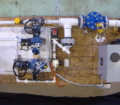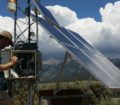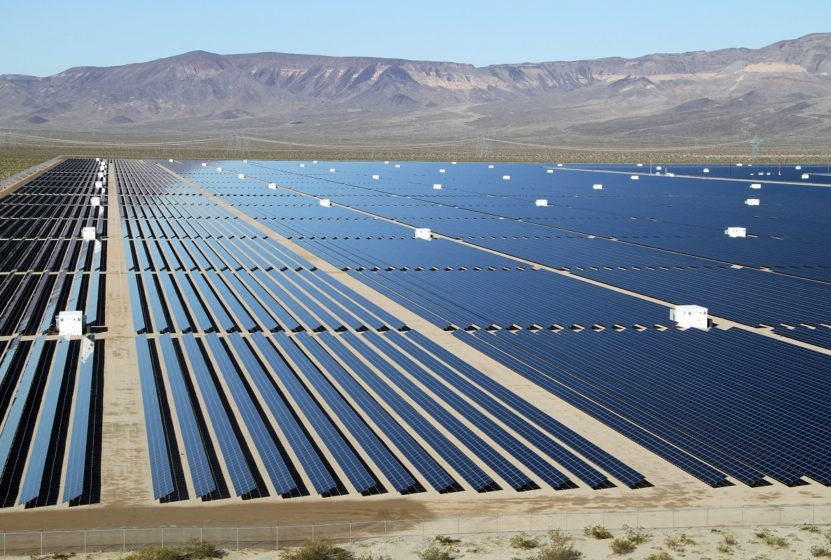Copper Mountain Solar 1 –Sempra Renewables, LLC Photo
Diverting the Drip
NEXUS researcher investigates the impacts of solar panel arrays on rainwater infiltration
By Jane Palmer
August, 2017
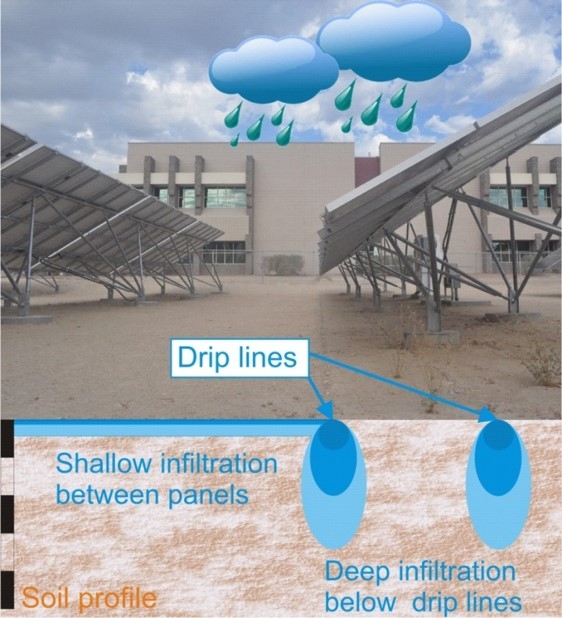
Conceptual model of water infiltration into soil under a solar array. –M. Berli
Simulating Showers
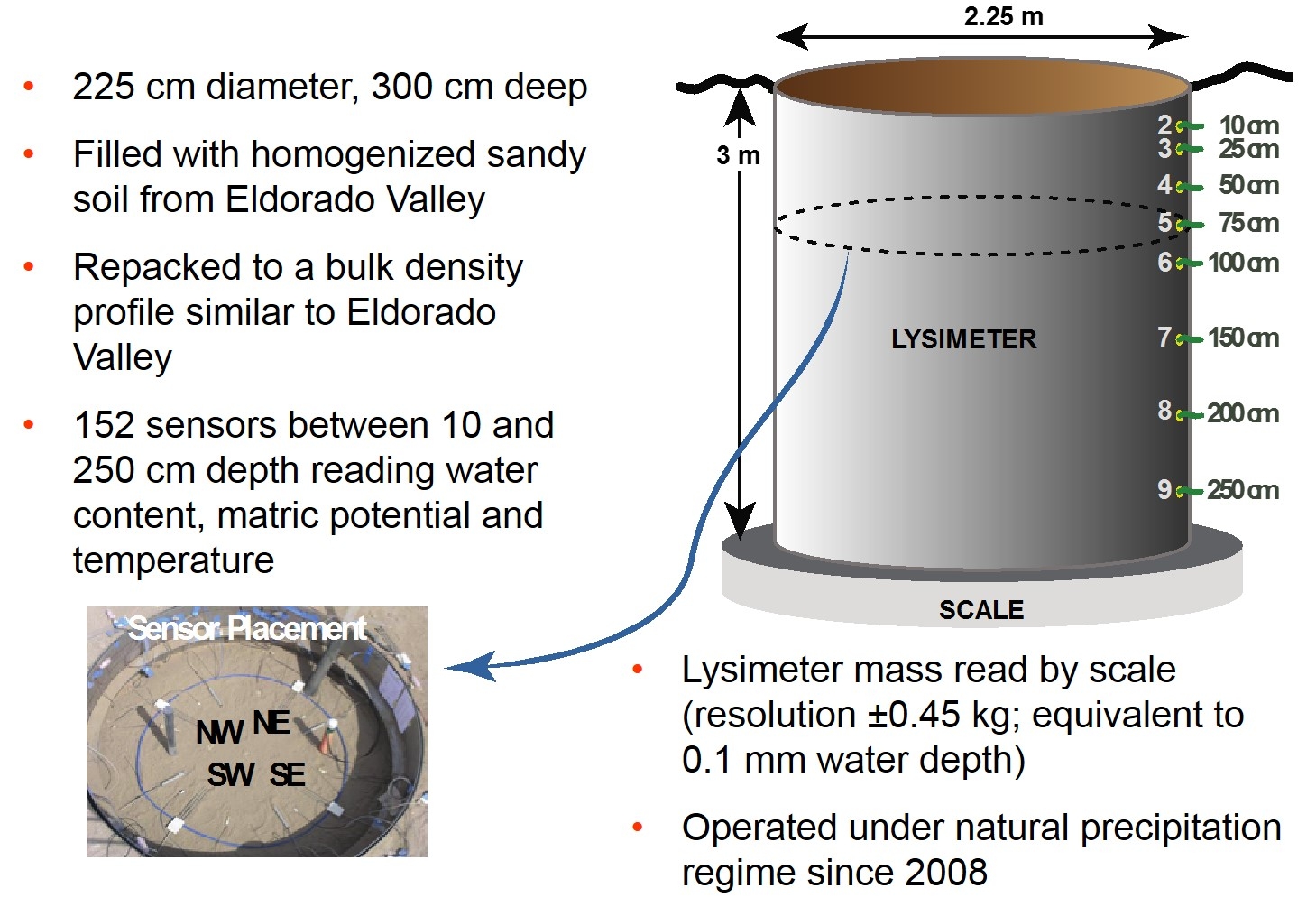
Weighing Lysimeter
–Chief, K., Young, M. H., Lyles, B. F., Healey, J., Koonce, J., Knight, E., Johnson, E., Mon, J., Berli, M., Menon, M., and Dana, G. (2009). “Scaling Environmental Processes in Heterogeneous Arid Soils: Construction of Large Weighing Lysimeter Facility.” Desert Research Institute, Las Vegas, NV.
From Loss to Storage
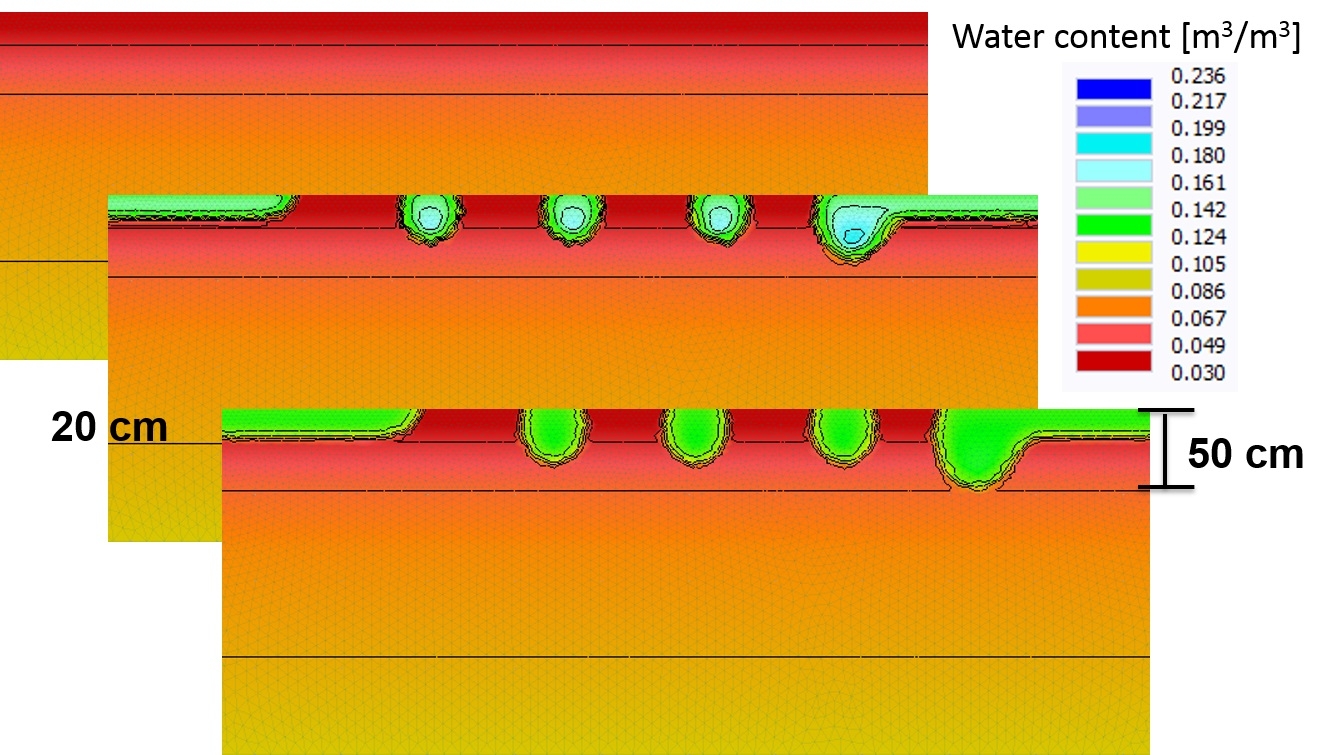
HYDRUS-2D Simulation Results –M. Berli
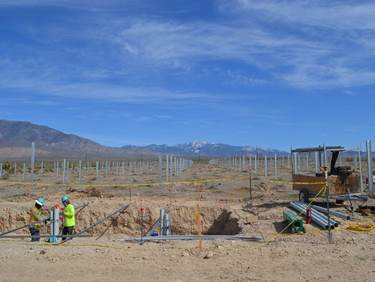
VEA Community Solar Project Construction — VEA Photo
Connecting Vital Research With the Community
Markus Berli’s research focuses on assessing the impacts of solar energy generation on the environment and, in addition, Berli is also a Co-Lead of the NEXUS External Engagement component. Along with Co-Lead Dr. Mary Cablk, also a NEXUS scientist at the Desert Research Institute, Berli has organized panels with representatives from federal agencies and the industry side of solar development. The outcome of one such panel in 2015 resulted in a collaboration between Valley Electric Association, Inc. (VEA) and the US Fish and Wildlife Service with a view to minimizing the environmental footprint of VEA’s community solar project.
_______________________________________

NEXUS Notes is a monthly publication of the Solar Nexus Project, which is a five-year research project funded by the National Science Foundation’s Established Program to Stimulate Competitive Research “EPSCoR” (Cooperative Agreement #IIA-1301726) focusing on the nexus of (or linkage between) solar energy generation and Nevada’s limited water resources and fragile environment.
Any opinions, findings, and conclusions or recommendations expressed in this material are those of the author(s) and do not necessarily reflect the views of the National Science Foundation.
_______________________________________
If you would like to know more about the NEXUS project,
please contact, Dr. Gayle Dana
Gayle.Dana@dri.edu
530-414-3170
_______________________________________

